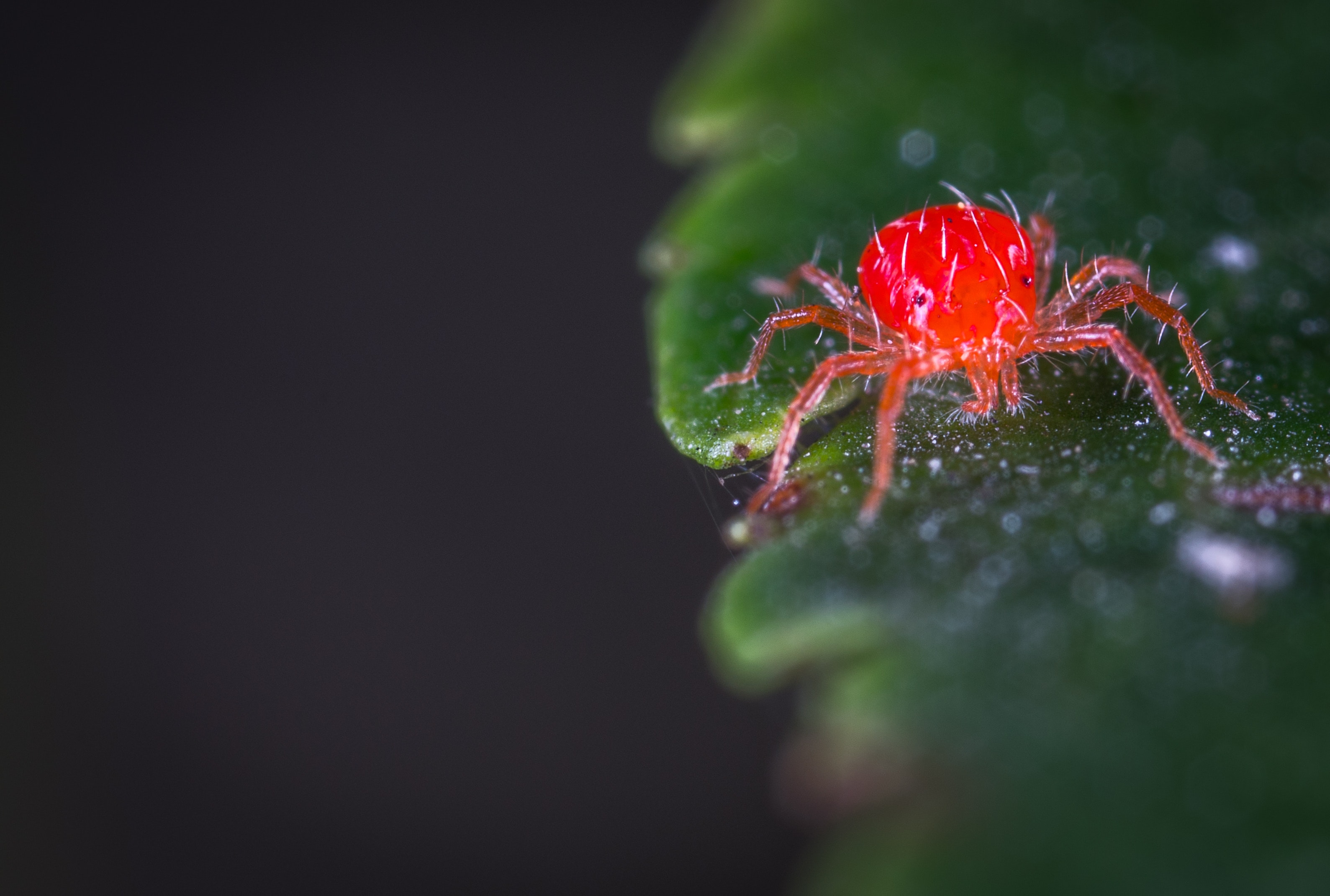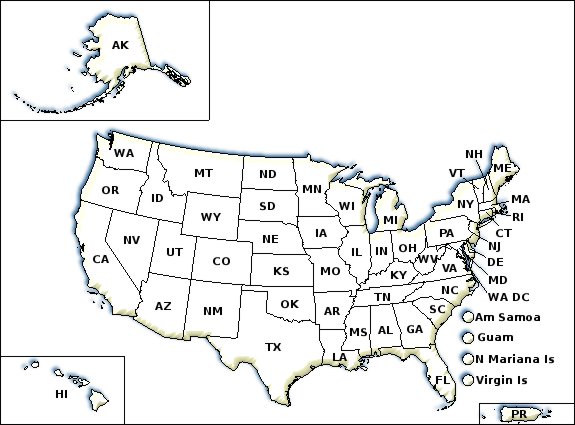Mites
1.800.858.7378npic@oregonstate.edu
We're open from 8:00AM to 12:00PM Pacific Time, Mon-Fri
A to Z
Mites
Mites

Mites are small and insect-like but are closely related to spiders. Often, they are the size of a period following a sentence. They use piercing mouthparts to eat sap from plants or feed on blood. Mites do not hop or fly, but can crawl onto people or animals. They may be found on stored food, crops, and inside homes. They may bite people or animals. Others may be parasitic to birds or mammals. Some mites may also scavenge for their food.
Plant damaging mites:
These mites are able to attack many different plants. Some may cluster together while feeding. Plant damage may show signs specific to a type of mite. Spider mites are commonly recognized because they create webbing.
Parasitic and biting mites:
These mites may bite other animals, including pets and people, if their preferred animal host dies. Some people may be sensitive to mites, and may show irritation or welts. Mites that bite humans may not survive long without a host. They can be picked up off of surfaces or through contact. Some common biting mites include:
- Varroa mites on honeybees
- Chiggers
- Bird mites
- Rodent mites
Stored food mites:
Stored food like grains, cheese, corn, and dried foods are products that may be attacked by mites. Mites found in stored food facilities favor high humidity and moisture. They can also spread fungal growth in stored foods. These mites are less common in homes.
Control tips:
- Identify your pest. Control methods may depend on the type of mite.
- Find and identify the source/host of the mite.
- Mites often stay close to the source. If you find them in only one room, their source is likely close by.
- Vacuum beds, rugs, furniture, and carpets frequently if mites are present indoors.
- Wash mite-infested fabrics in hot water and dry on high heat.
- Block birds and rodents from nesting in the home or yard/garden.
- Trim branches and overhanging limbs around the home.
- Cut back vegetation near windows and doors to limit entry to homes.
- Mow regularly and limit brush and overgrown weeds in your yard. This will make areas less suitable to rodents and mites.
- Examine potentially infested plants regularly to monitor for mite presence.
- Use water to spray mites off infested plants.
- If you choose to use a pesticide, always follow the label. Try a lower toxicity product first.
- Even if using pesticides for mites, consider rodent or bird control when appropriate.
- If you have a pesticide product in mind, have your label handy and click here for information about that product.
If you have questions about this, or any pesticide-related topic, please call NPIC at 800-858-7378 (8:00am - 12:00pm PST), or email us at npic@ace.orst.edu.
Mites
- Identify your pest.
- Find and identify the source of the mite.
- Vacuum indoor areas frequently if mites are present.
- Keep rodents and birds from nesting near or in homes. Mites may stay close to a host.
- Examine potentially infested plants regularly.
- Trim plants and branches near homes to limit entry.
- Use water to spray mites off infested plants.
- If you choose to use a pesticide, always follow the label. Try a lower toxicity product first.
If you have a pesticide product in mind, have your label handy and click here for information about that product.
County Extension Offices
Through its county agents, the Cooperative Extension Service gives individuals access to the resources at land-grant universities across the nation. These universities are centers for research in many subjects, including entomology (the study of insects) and agriculture. Each county within the United States has an Extension office, which is staffed with agents who work closely with university-based Extension specialists to deliver answers to your questions about gardening, agriculture, and pest control. You can find the phone number for your local county extension office in the local government section (often marked with blue pages) of your telephone directory or by clicking on the map below.

U.S. States:
AK | AL | AR | AZ | CA | CO | CT | DE | FL | GA | HI | IA | ID | IL | IN | KS | KY | LA | MA | MD | ME | MI | MN | MO | MS | MT | NC | ND | NE | NH | NJ | NM | NV | NY | OH | OK | OR | PA | RI | SC | SD | TN | TX | UT | VA | VT | WA | WI | WV | WY | Washington D.C. |
U.S. Territories:
Puerto Rico | American Samoa | Guam | Northern Mariana Islands | Virgin Islands
Additional Resources:
Biting mites
- Biting Mites - Texas A&M AgriLife Extension
- Parasitic Mites of Humans - University of Kentucky
- Mites That "Bug" People - North Carolina State University Extension
Plant mites
- Mites - University of California IPM
- Spider Mite Damage and Control (video) - Oklahoma State University Extension
- Tree Fruit Mite Pests: Pear Blister Mite and Pear Rust Mite - Penn State University Extension
- Mite IPM - Oregon State University Extension
Stored food mites
- Stored Product Pests: Grain Mite - Purdue Extension
- Flour and Grain Mites - Penn State Extension
